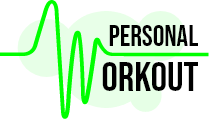Menopause – Losing Weight During Menopause is Possible
Several women came to Personalworkout over the past few months and all of them had recently gone through the menopause. They all felt uncomfortable with their bodies and didn’t want to just accept it—great! And why? —Because the doctor told them there was nothing they could do, that it was normal and they should just accept it? (No kidding—that’s what happened.)
As a personal training studio with a holistic approach, we see things differently! A healthy mind in a healthy body! But the mind is not satisfied with the way it looks! So we’re changing that. In this blog post, I would like to give you an insight into what you can do and encourage all women who feel the same to do something about it—because you can!
When does a woman go through menopause and what are the symptoms?
Menopause is when you go 12 months without a menstrual cycle. It often occurs between the ages of 45 and 52 (or earlier, which is actually not normal and something can be done about it. But that is not the subject of this blog).
Symptoms vary greatly and can last up to 15 years after menopause. The most common symptoms are hot flashes, sweating, sleep problems, mood swings, weight gain, decreased libido, difficulty concentrating, and forgetfulness.
Postmenopause is when all the symptoms of menopause have disappeared. Usually after the age of 55.
Estrogen and progesterone—a closer look behind the scenes
It is well known that these “female” sex hormones are produced less or not at all with age. There are four different types of estrogens.
Estrone (E1), estradiol (E2), estriol (E3), and estestrol (E4). E4 is only produced during pregnancy. E2 and E3 decrease the most during menopause, and E1 becomes the primary estrogen. However, E2 is the most potent and accounts for 80% of premenopausal estrogen, which is why this decline is so noticeable. E1 and E3 account for only 10% each before menopause. E3 has the weakest effect. There are ER-alpha and ER-beta receptors for estrogen, and not all forms of estrogen have the same effect on both. However, stimulation of both is important for well-being.
Estrogens are often demonized, but they perform enormously important functions in the body. For example, they are essential for bone density and therefore have an “osteoporosis-preventing” effect. They are also anti-inflammatory. They are good for memory, help regulate temperature, and increase serotonin levels (our natural antidepressants). Ring any bells? All functions that decline and then show up as symptoms!
And let’s not forget progesterone. Its production also declines with age, even before estrogen. Progesterone is important for good sleep, sex drive, increases serotonin, and is central to the GABA receptors in the brain. GABA calms the whole system (CNS) and has an anxiety-reducing effect.
Why is there belly fat during menopause?
On the one hand, it has been discovered that estrogen has an appetite-suppressing effect. This means that the less estrogen you have, the hungrier you are.
On the other hand, you need to know how progesterone and estrogen are produced to understand the problem of belly fat.
At the beginning of the chain is cholesterol. Approximately 50% of pregnenolone is formed in the adrenal cortex and 50% in the ovaries. This is the starting material for both progesterone and androgen metabolism (see figure).
Without going into detail, you can see from the diagram that progesterone can be made directly from it, but not estrogen. This can only be made via DHEA and androstendione, and testosterone via an enzyme called aromatase. More on this in a moment.
Since the ovaries are no longer involved in the production of pregnenolone, the adrenal cortex has to do the job almost all by itself. There are other tissues that also produce a small amount of estrogen, including fat tissue. Since the adrenal glands are extremely important because their job is also to produce cortisol, the body tries to support them by any means necessary. One way the body does this is by holding on to fat tissue, since the aromatase enzyme mentioned above helps to produce estrogen (E1).

What else to consider for menopausal symptoms
The thyroid is inextricably linked to female sex hormones. Thyroid hormones help produce progesterone from pregnenelone. On the other hand, progesterone also helps bring more thyroid hormones into the bloodstream. When less progesterone is produced during menopause, the thyroid has to work harder. Estrogen also helps with the production of thyroglobulin and proteins that carry thyroid hormones in the blood. All of this tends to lead to lower metabolic activity, which means less energy expenditure and a higher risk of weight gain. You can find out how to boost your metabolism in another blog article.
Blood sugar management is not only important during menopause, it is probably “THE” marker of health and longevity. The fact that estrogen and progesterone have a positive effect on it and that it can then fluctuate more is not necessarily beneficial for weight loss. This is why it is especially important to use the right diet and tools to control blood sugar levels.
I just want to know what to do about menopause symptoms! Yeah yeah, it’s coming 🙂
Fish oil has an anti-inflammatory effect and provides the building blocks for cholesterol, which is the building block for all sex hormones, including estrogen and progesterone—so cholesterol is not a bad thing at all, but essential for survival.
There are very few studies looking specifically at fish oil and menopausal symptoms. Menopause or not, I take cod liver oil myself and recommend it to all my clients. It is a natural source of vitamins A and D and also contains omega-3 fatty acids. You can buy fish oil here.
Vitamin E is anti-inflammatory, as are estrogens. It is said to have a positive effect on menopausal symptoms and is often mentioned in this context, but there are few studies to show this.
If you still want to try it, I recommend this product.
Vitamin C is an important antioxidant and has been shown to support progesterone production. No wonder the adrenal glands are one of the organs with the highest concentration of vitamin C. It is important that the vitamin C is organic, i.e. derived from natural products. Ascorbic acid is only one part of the vitamin C complex and I strongly advise against taking it in isolation. I use this product myself.
Magnesium—Magnesium is a “panacea”. It is involved in over 3000 metabolic processes and can reduce hot flashes, fatigue, stress and improve sleep.
Plant and herbal products are very popular for relieving the symptoms of menopause. However, an analysis of the major studies on their effects reveals a mixed picture. The results range from no effect to good effect. More studies are needed. It is certainly worth a try! The most effective herbal products are
Black cohosh, yam, Chinese angelica, maca, evening primrose oil, monk’s pepper, and St. John’s wort. Read more about them here.
I myself have had very good results with some clients using the following product, which is a blend of extracts from Phlomis umbrosa, Cynanchum wilfordii and Angelica gigas Nakai:
Phytoestrogens are “estrogen-like” substances, some of which bind to estrogen receptors and can have both pro- and antiestrogenic effects. However, their effects are highly controversial. Probably the best known are soy and hops, but also flaxseed. Overall, they tend to be less effective than the plants and herbs mentioned above. The best results are shown by red clover and hop, which is one of the few phytoestrogens that acts on ER-alpha receptors!
Mind-body therapies, such as hypnosis, have sometimes shown very good results, such as reducing hot flashes or improving sleep. For more information, including other interventions and their effects, see this meta-analysis
External hormone replacement should be a last resort. If necessary, bioidentical hormones are preferable to synthetic hormones.
Avoid caffeinated foods. Caffeine increases cortisol, which can block the receptors for progesterone. It has also been shown to lower estrogen levels. This is the last thing you want during menopause.
Long-duration cardio is not effective. Strength and interval training is better.
Disclosure: If you order the products using the links above, I will receive a minimal affiliate commission!
If you are going through menopause and want to feel good in your body again, contact us for a free consultation!
For more valuable tips on healthy living, check out our free lifestyle guide (GERMAN).
SOURCES
- https://www.ncbi.nlm.nih.gov/pmc/articles/PMC6419242/
- https://www.nutraingredients.com/Article/2009/02/03/Omega-3-improves-menopausal-side-effects-Studies
- https://www.bioadaptivemedicine.com/new-blog/estrogen-progesterone-thryoid-hormones
- https://www.mayoclinic.org/diseases-conditions/diabetes/in-depth/diabetes/art-20044312
- https://www.ncbi.nlm.nih.gov/pmc/articles/PMC4192010/
- https://www.ncbi.nlm.nih.gov/pmc/articles/PMC3286233/
- https://www.ncbi.nlm.nih.gov/pubmed/15666839
- Dr. Carrie Jones – Peri-Menopause and Menopause: Back to Basics, 2018
- Sara Gottdied – Die Hormonkur
- Konsultationen mit Eoin Lacey
Challenge of the Month
What Clients Say





















